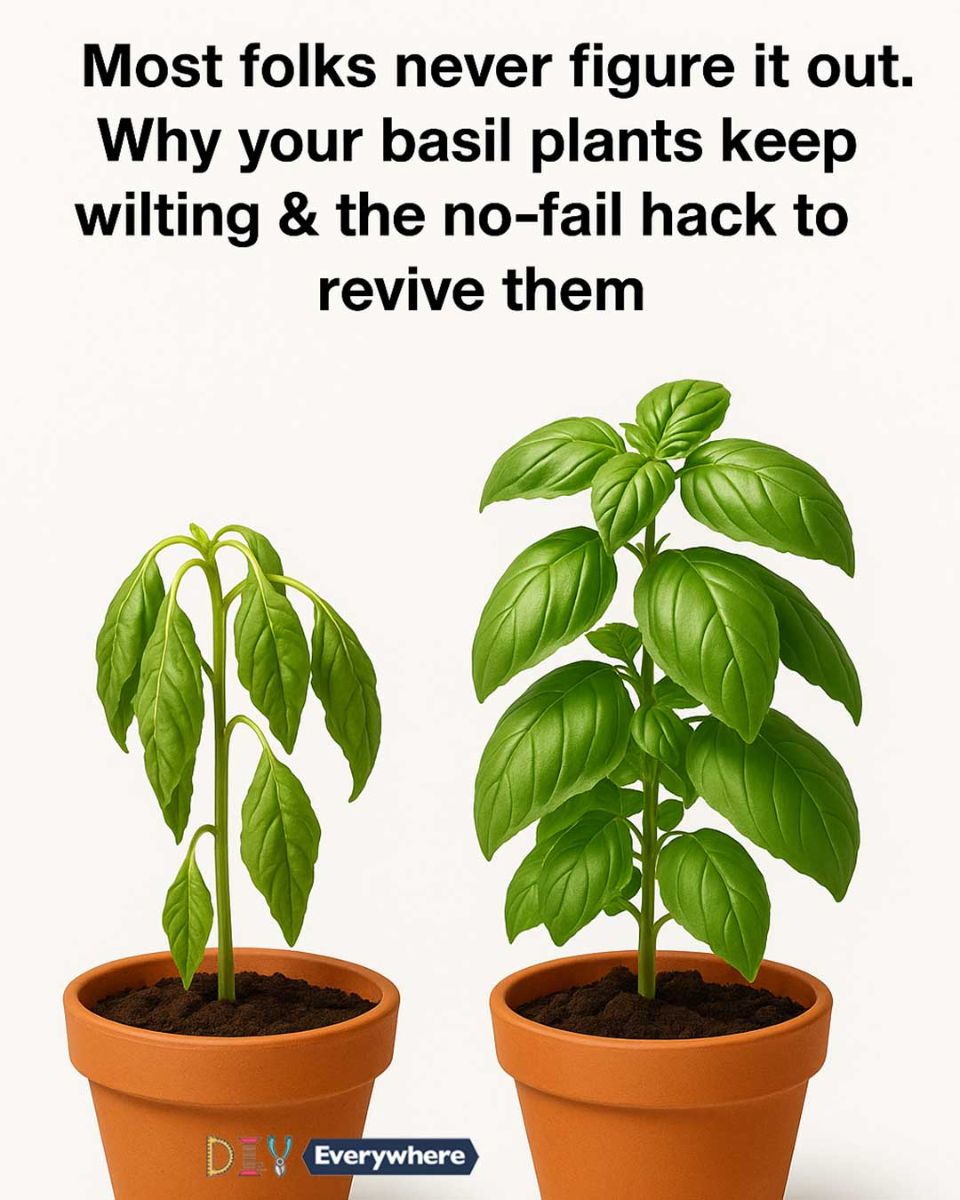Basil, with its aromatic leaves and essential role in culinary arts, is a staple in many herb gardens. However, it's not uncommon for gardeners, both novice and experienced, to face the frustration of wilting basil plants. Understanding the reasons behind this common issue can be the key to ensuring a healthy, thriving basil plant.
Many factors contribute to the health of basil, from watering habits to environmental conditions. Despite being relatively hardy, basil plants require specific care to maintain their vigor. This article delves into the common pitfalls in basil care and presents practical solutions to revive and sustain your basil plants.
Advertisement
1. Understanding Basil's Natural Habitat
Basil thrives in warm, tropical climates, similar to its native environment in Southeast Asia. It prefers temperatures between 70°F to 80°F (21°C to 27°C) and humidity levels that mimic the lush, wet conditions of its origins. Understanding this can help gardeners replicate these conditions at home.
Providing a consistent environment that mirrors its natural habitat can significantly impact the health of your basil plants. This means keeping them indoors during colder months and ensuring they receive ample sunlight and warmth.
2. Common Mistakes in Watering
One of the most frequent mistakes in basil care is improper watering. Basil prefers moist soil, but not waterlogged conditions. Overwatering can lead to root rot, a common cause of wilting. Conversely, allowing the soil to dry out completely can stress the plant.
It's crucial to water basil deeply but infrequently. A good rule of thumb is to water when the top inch of soil feels dry to the touch. Ensure the pot has drainage holes to prevent excess water from accumulating.
3. The Impact of Soil Quality
Soil quality is fundamental to the health of basil plants. Basil requires rich, well-draining soil with a pH level between 6.0 and 7.5. Poor soil can lead to nutrient deficiencies and prevent the plant from absorbing necessary nutrients.
Amending the soil with organic matter like compost can improve its structure and nutrient content. Regularly testing the soil's pH and adjusting as necessary can also prevent nutrient lockout.
4. The Role of Sunlight in Basil Health
Basil needs plenty of sunlight to thrive, ideally around 6 to 8 hours of direct sunlight per day. Insufficient sunlight can lead to leggy growth and weakened plants that are more susceptible to wilting.
Placing basil near a south-facing window or using grow lights can ensure they receive adequate light. During the growing season, consider moving potted basil outdoors to maximize sunlight exposure.
5. Temperature Fluctuations and Their Effects
Sudden changes in temperature can shock basil plants, leading to wilting. Basil is particularly sensitive to cold drafts and should be protected from temperatures below 50°F (10°C).
To minimize temperature stress, it's important to keep basil indoors during cold snaps and avoid placing it near air conditioning vents or windows that let in cold air. Consistency in temperature is key to a healthy basil plant.
6. The Importance of Proper Drainage
Without proper drainage, water can accumulate at the bottom of the pot, causing the roots to sit in water, which leads to root rot. This is a primary cause of wilting in basil plants.
Ensure that your basil's container has adequate drainage holes and use a well-draining potting mix to facilitate proper water flow. Elevating pots slightly can also help with water drainage.
7. Identifying Pests and Diseases
Basil is susceptible to various pests like aphids, spider mites, and whiteflies, which can cause wilting by feeding on the plant's juices. Fungal diseases, such as downy mildew, can also lead to wilting.
Regularly inspecting your plants for signs of pests and employing organic pest control methods, such as neem oil or insecticidal soap, can help keep these issues at bay. Ensuring good air circulation and not overcrowding plants can prevent fungal infections.
8. The Dangers of Overcrowding
Basil plants need space to grow, and overcrowding can lead to competition for light, water, and nutrients. This can weaken plants, making them more susceptible to wilting.
When planting basil, ensure there is adequate spacing between plants, typically 12 to 18 inches apart. This allows for optimal growth and reduces the likelihood of disease spread.
9. How to Prune Basil Correctly
Pruning basil encourages bushier growth and prevents the plant from becoming too leggy, which can lead to wilting. Regularly harvesting basil leaves can actually strengthen the plant.
To prune, cut just above a node (where leaves emerge) using sharp scissors. This will stimulate the plant to produce new shoots and leaves, maintaining a healthy, robust plant.
10. The Miracle of Companion Planting
Companion planting involves growing basil alongside other plants that benefit each other. Basil pairs well with tomatoes, as it can repel pests that commonly afflict tomatoes, while tomatoes provide shade to the basil.
This symbiotic relationship can enhance the health and yield of both plants. Planting basil near other herbs like oregano and parsley can also create a beneficial environment for growth.
11. The No-Fail Hack to Revive Wilting Basil
If you find your basil wilting despite your best efforts, try this simple hack: give the plant a deep soak. Place the entire pot in a bucket of water for about 15 minutes, allowing the soil to become thoroughly saturated.
Advertisement
After soaking, let the pot drain completely to prevent waterlogging. This method can help rehydrate a severely dehydrated plant. Additionally, trimming any damaged leaves and relocating the plant to a more suitable environment can aid recovery.

